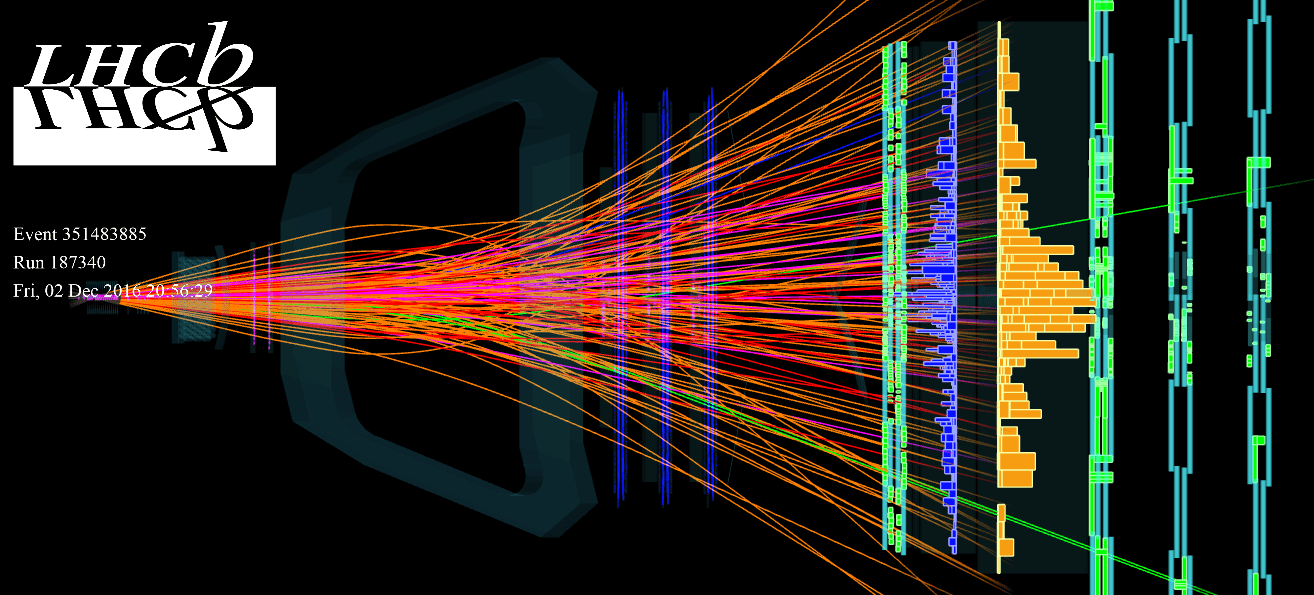Last Updated on March 24, 2017 by Editor Futurescope
Scientists from the European Organization for Nuclear Research (CERN) have announced the discovery of five new subatomic particles, which may help explain how the centers of atoms hold together.
According to Tara Shears, of the University of Liverpool, the discovery happened by chance, thanks to the power of the Large Hadron Collider (LHC).
The particles were discovered in the framework of the LHCb research – also known as “beauty experiment” -, intended to investigate the particles composed by the ‘beautiful’ quark (b). This is the fourth largest experiment in the Large Collider, which explores what happened just after the Big Bang gave birth to our universe.
“These particles have been hidden right in front of us for years, but the extraordinary sensitivity of the LHC particle detector has been needed to get attention,” Tara told the BBC.
Thanks to the detector LHCb was finally proved the existence of the pentaquarks – particles composed of five quarks – as well as described a series of anomalies in the disintegrations of the meson B -variation of a particle composed of two quarks. One of the main objectives of the LHCb, as well as the entire accelerator complex, is to look for a new physics beyond its standard model (the basic model that describes the transformation of elementary particles).
In July 2012, scientists working on the Large Collider made history by capturing the Higgs boson, known as the ‘particle of God’. It is a fundamental piece of the universe, thanks to which the elements get mass and whose existence was predicted by the British physicist Peter Higgs in the 60’s.
The discovery five new subatomic particles are different states of the Omega-c barium, whose existence was confirmed in 1994. For years, physicists believed in the possibility of the existence of different states of excitation of that particle, but that had never been observed.
Like neutrons and protons, the barium is made up of even smaller particles, called quarks, which are classified into six types: up, down, strange, charm, bottom and top.
Neutrons and protons are formed by “up” and “down” type quarks, which are held together by a powerful nuclear force. Physicists work with quantum chrome dynamics theory to understand these interactions, but predictions require complex calculations.
Already the baryon are formed by quarks of the types “charm” and “strange”, heavier than those of “up” and “down”. The barium Omega-c-zero and is formed by two quarks “strange” and a “quark”.
In addition to that state, scientists have detected that the Omega-c-zero decays for another barium, called “Xi-c-plus”, with a “charm”, a “strange” and an “up”. In turn, this particle decays to three others: a proton p, a kaão K – and a spin π +.


For scientists, the hope is that by studying these “cousins” of neutrons and protons it will be possible to better understand the functioning of nuclear forces.
“This is an important discovery that will help you understand how quarks are linked. This should have implications not only for the better understanding of protons and neutrons, but also for the more exotic states of multiple quarks such as tetraquarks and pentaquarks, “said Greig Cowan of the University of Edinburgh in Scotland.
The newly discovered particles are not so exciting, but they remain a significant finding. By measuring their properties, physicists hope to gain a greater understanding of the nature of the nuclear force, which is the phenomenon that keeps the atomic particles together.
The Large Hadron Collider is the largest particle accelerator in the world, installed in a tunnel 27 kilometers in circumference on the border between France and Switzerland. In 2013, Thousands of physicists from dozens of countries, as well as hundreds of universities and laboratories, are involved in its development today. The laboratory has gained prominence in the international press for the detection of the Higgs Boson, popularly known as the “particle of God”.







